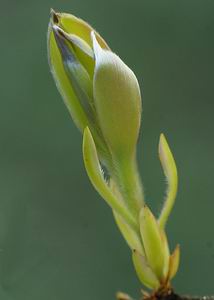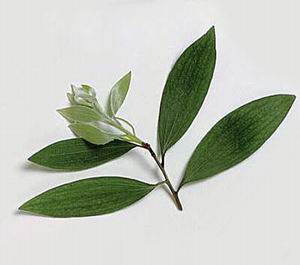CAJUPUT




 Plant/Part: Tree/Wood (Source: Indonesia) Plant/Part: Tree/Wood (Source: Indonesia)
Latin Name: Melaleuca cajaputi
Family: Myrtaceae
Extraction: Steam Distillation
AROMA: Sweet , herbaceous and rather penetrating.
PROPERTIES: Analgesic, Antidontalgic, Antineuralgic, Antiheurmatic, Antiseptic, Antispasmodic, Balsamic, Cicatrisant, Decongestant, Expectorant, Febrifuge, Insecticide, Pectoral, Stimulant, Sudorific, Vermifuge Improves mood, increases resistance to infections. A good 'unwinding' oil. Can be used in a Steam inhalation to help clear the nasal passages, also helpful when treating oily skin and spots. Excellent antiseptic for the respiratory tract. Its sudorific properties help to minimise feverish colds by exerting a cooling influence. A drop in the bath promotes sweating, releasing flu toxins and is also effective in inhalations I Particularly beneficial at the start of infections such as in colds, pharyngitis, laryngitis and bronchitis. Said to ease chronic pulmonary disease generally and may be helpful for asthma. Soothes colic and inflammation of the intestines such as enteritis, dysentery, gastric spasm, nervous vomiting and intestinal parasites. Also has an antiseptic effect on the urinary system and could help with cystitis and urethritis.
CHEMICAL CONSTITUENTS: Terpineol (Alcohol), Benzaldehyde (Aldehyde) , Cineole (Ketone), Dipentene, Limonene, Pinene (Terpenes).
PRECAUTIONS: Cajaput is a stimulant and an irritant and must be used with care. This powerful oil should be used with caution and could in some cases irritate the skin and mucous membranes.
BLEND: Blends well with: Angelica, Bergamot, Birch, Cardamom, Clove, Geranium, Lavender, Myrtle, Nutmeg, Rose, Rosewood, Thyme.
USES:
Digestive: stimulates the production of gastric juices (carminative), tones the stomach. antiseptic, helpful in the treatment of intestinal infections.
Genito-Urinary: helpful in the treatment of genito-urinary infections.
Respiratory: helps to expel mucus, antiseptic. used for asthma, bronchitis, coughs, catarrh, sinusitis, sore throat.
Muscles/Joints: its mild pain-relieving properties make it helpful in the treatment of muscular pains, arthritis and rheumatism. relaxes the muscles.
Skin/Hair: used for oily skin and spots.
Other: reduces fever. (febrifuge)
Cajeput (or Cajuput) oil is obtained from the leaves and buds of the tree Melaleuca leucodendron. The tree has a whitish bark which has given the oil its name, derived from the Malaysian 'caju-puti' meaning 'white tree'. The oil is extracted by steam distillation, and is a greenish-yellow colour which distinguishes it from several other oils from closely related varieties of Melaleuca The greenish tinge is due to traces of copper found in this tree. The active principles of the oil include large proportions (between 45% and 65%) of cineol, with terpineol, pinene and various aldehydes. The odour is decidedly medicinal, camphorous and very penetrating.
The trees of the Melaleuca group are a sub-species of the family Myrtaceae which includes all the Eucalyptuses, Clove and Myrtle and the predominant property which is shared by all members of this family is the ability to combat and sometimes prevent infection.
The use for which Cajeput is best known is in inhalations for the common cold and other respiratory infections, and it is used in a number of proprietary cold treatments. Used in a steam inhalation it will effectively clear the nasal passages while inhibiting the bacteria that proliferate in the mucus formed during colds and flu, and which can lead to catarrh and sinusitis. It also has pain-killing properties which are useful in reducing the discomfort of sore throats and headaches that accompany colds.
 Cajeput can irritate the skin, so it needs to be used with caution, and well diluted and must never be allowed to come into contact with the mucous membranes. For most situations where Cajeput might be used on the skin, such as in a massage oil for chest and throat infections, and a pain-killing friction for arthritis, gout and rheumatism, I would recommend the alternative of Niaouli, another Melaleuca which is non-irritant. Cajeput can irritate the skin, so it needs to be used with caution, and well diluted and must never be allowed to come into contact with the mucous membranes. For most situations where Cajeput might be used on the skin, such as in a massage oil for chest and throat infections, and a pain-killing friction for arthritis, gout and rheumatism, I would recommend the alternative of Niaouli, another Melaleuca which is non-irritant.
One last interesting fact is that Cajeput can be used to dull the pain of toothache. A single drop is put in or on the tooth as a first-aid until the sufferer is able to get to a dentist. Presumably the relief from pain is sufficiently welcome for the stinging this must cause to be disregarded. The only other oil used in this way is that of Clove, which is another strong irritant and also a member of the larger botanical family (Myrtaceae) concerned.
Caution: Cajeput is a powerful stimulant, and it is not advisable to use it for inhalations before bedtime unless it is mixed with a sedative oil to counteract this effect. The commercial cold treatments which include Cajeput contain other oils (usually Lavender) for this reason.
See also the entry for NIAOULI to which Cajeput is closely related, and for TEA TREE.
Back to the top of the page


|